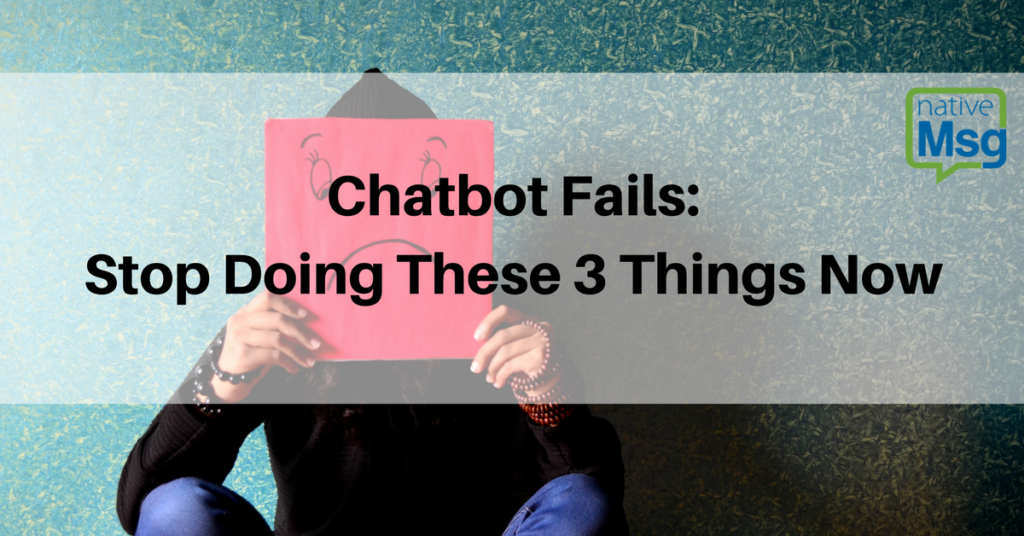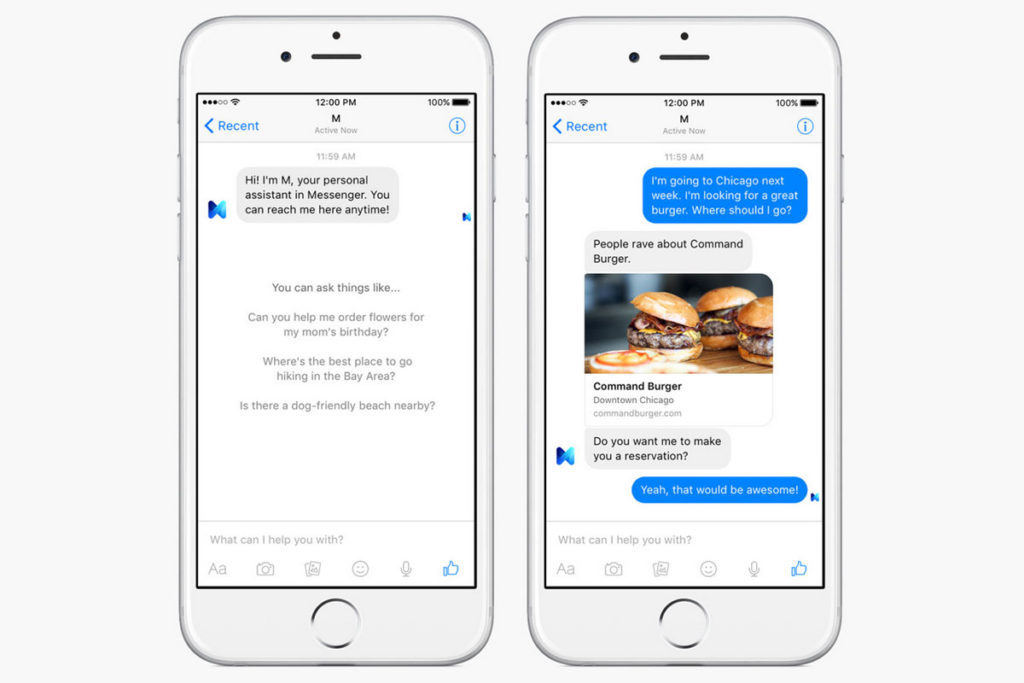
Brands and innovators are fascinated by how to use a chatbot for customer service, commerce and automation. But if you don’t know how to do so correctly, you’re likely setting yourself up for failure. Take this data into consideration:
- In 2017, Facebook Messenger chatbots showed a 70% failure rate , disappointing many users and causing Facebook to re-tool its offering for more specific use-cases.
- The reality of workforce fears and anxiety surrounding job extinction due to automation, where some numbers indicate 35% to 47% of jobs will be impacted by computerized automation (like chatbots).
- Misinformation that natural language processing and machine learning are omnipotent.
If even the experts are at a crossroads in AI and application, how can you as a marketer or brand adopt a well-working conversational UI? This is one of the major obstacles in how to move forward with customer engagement and chatbots.
However, for the 70% of Facebook Messenger chatbots that aren’t working effectively––there’s the minority of chatbots that are successful. What are they doing––or not doing? Here’s what you need to know so you can avoid big chatbot fails and create a tool that does what you want it to.
Stop Designing if You Haven’t Completed a Thorough Discovery Phase
One of the major flaws in Facebook’s crusade to dominate the AI empire was its lack of ability to connect B2C chatbots with users. The landscape seemed ideal for commerce, but the outcome has been dreary.
So what happened? Data shows that the majority of mobile users are open to chatbots and have used one in the last year.

Instead, consumers were either confused, unaware or turned off by poor experience. Likewise, major brands with high Facebook engagement that stood to benefit were also slow to add a chatbot.
This leads to a valuable lesson: reach isn’t nearly as important as the reason, or the tightly defined and managed chatbot experience.
Stop Planning without a Prototype
Planning is good. The right approach to planning is best.
Designing a chatbot with natural language processing and machine learning, or any kind of conversational AI, like a voice assistant, takes many stages to do:
- Deciding on a specific use-case for your chatbot
- Defined messaging channels
- User acquisition and numbers as it relates to back-end support
- Functionality
- Testing
- Marketing
- Launch and continued data training
Of course, each of these stages takes many steps, too. Functionality is the heart of design and planning. It entails integrating channels, intensive time in design on conversation flows and copy and the strong NLP and machine learning necessary to animate the conversation successfully
But this is where a prototype, first, even before moving to a final prototype beta test, should be part of your planning stage. A prototype should include the main framework complete with NLP and ML. It will allow you to see flaws you may not have even thought about, or have thought about and still need to solve. You’re looking at how well a chatbot can complete basic tasks at this point. A chatbot prototype is a necessary expense to garner better information. It allows you to see whether the chatbot is workable and to continue to make design modifications.
Later on, you’ll be tracking and testing how well it completes the main task.
Does it respond correctly?
Does it respond incorrectly? If so, what type of response does it give? From these answers, you’ll be able to map how and where to fix bugs.
Stop Seeking a Million-Dollar Experience from a Simple Chatbot Builder App

Let’s say you want a successful chatbot layer that helps customers gain information faster and creates a more responsive experience. You see you can build your own, easily and deploy it fast.
If that seems too good to be true, you’re right.
Chatbot building and deployment for simple solutions can work for extremely basic tasks, but if you want a service that’s going to create extraordinary value and experience, you need to re-think this strategy.
AI is such a broad term that encompasses so many parts. A poorly designed API will result in a poor chatbot experience. But what that interface links to, NLP, NLU and ML is what establishes an intelligent and successful chatbot. You’ll need the budget for the right skills and level of experience to deliver that.
Confused about all the Chabot Vocabulary that’s Bandied About? Check-out: Chatbot Vocabulary: 10 Chatbot Terms Most People Confuse
Don’t buy-into the misconception that just because chatbot deployment is a faster product to launch, that it also comes with significantly decreased cost.
For sound design and flexible functionality, whether on a platform or from the ground-up as a native app, expect to spend five to six figures for enterprise and brand solutions.
Here’s What To Do
Make the discovery phase count:
- Who are your customers and what do they value?
- What chatbot solution will improve that value?
- What are the most important factors that create key emotional drivers for your customers?
This is a start for how to begin thinking about chatbot tasks and use-cases. Cost savings is one of the top benefits for most use-cases. Automation and customer service support stands to save companies 25% to 40% in operation costs.
Integrate a layer of conversational AI into existing structures
It is possible to integrate a chatbots or a messaging layer within legacy structures and software. It’s a cost-effective way to reduce friction points, starting with automating simple tasks. Your chatbot can always grow where your business and users go next.
Get used to the idea that businesses are pursuing chatbots and they’re here to stay. Just because you have a structure that’s profitable at this point, AI is here. You must start to factor in this reality and plan for it. Adding a conversational layer is the place to start.
Want to learn more about how an intelligent conversational component can create huge engagement, easier lead-building and better brand experience? Contact nativeMsg for a customized solution for your business.

